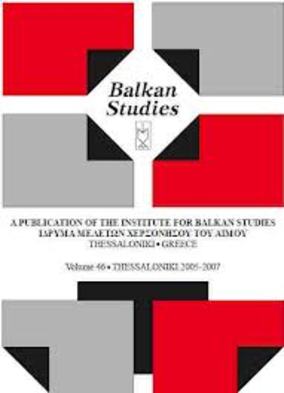Art et societe en Roumanie entre les dieux guerres mondiales
Part of : Balkan studies : biannual publication of the Institute for Balkan Studies ; Vol.22, No.1, 1981, pages 59-71
Issue:
Pages:
59-71
Parallel Title:
Art and society in Romania between the two World-Wars
Section Title:
Articles
Author:
Abstract:
The First World War marked a crucial point in the history of theRomanian people, the climax of an age old striving: to achieve the nationalunity. This world conflagration had deep influences on the entire political,social, spiritual and artistic life in Romania. While still on, the war became asource of inspiration for the artists ; long after it was over they still drew onit to create literary masterpieces. Whenever a Romanian writer is gropingto explain the development of social and moral structures, the tragedy on thewhole and that of the individual in our times, he will always refer to the FirstWorld War.We are not concerned with the war as a literary subject matter—althoughit happened for the first time that such an event engendered essential works,not occasional ones—but with the new directions brought about into ourintellectual life and the new turn taken in all the domains of the culture.Probing into the configuration of the Romanian art of the thirties andforties, we would sense a direct response of the artist to the life’s impetus—which in its turn underwent fundamental changes—and an indirect onesublimated in literary and artistic works that are characteristic for theRomanian spirituality. It could be said that for two decades (1920-1940),the Romanian culture has known a truly golden age, sort of a renaissanceperiod. The man’s problems, his ups and downs, his tragedy were those ofthe contemporary man, of the men from the trenches; the searching and theanxieties were arising from the convulsions of the Romanian society, fromreproving certain anachronistic structures. Never before the mutations towhich our culture was submitted were so spectacular, deep, basic and neverwas the decline of obsolete forms so swift and it never engendered such a capital new launch, to a renewal of structures which was complying with oneof the organic laws of the Romanian culture namely progress based oncontinuity.Aspiring towards universality, one of the essential features of the Romanianculture in between the two wars, has not meant denying the folkloreinspiration which in the last century has prompted the revival of arts andliterature. The folklore was not an opposition against the renewals of themodern art ; it was an element of progress revealing the essence, outlining thearchetypes and the defining categories of the structure of the people’s soul.By recalling that these directions were stood for by two outstandingpersonalities of Romanian and universal art—George Enescu and ConstantinBrancusi—we would understand why the Romanian culture was deeplynational and at the same time had a perennial resonance in the world; usingtraditions it renewed the structures of modern art.
Subject (LC):
Keywords:
Τέχνη στη Ρουμανία




